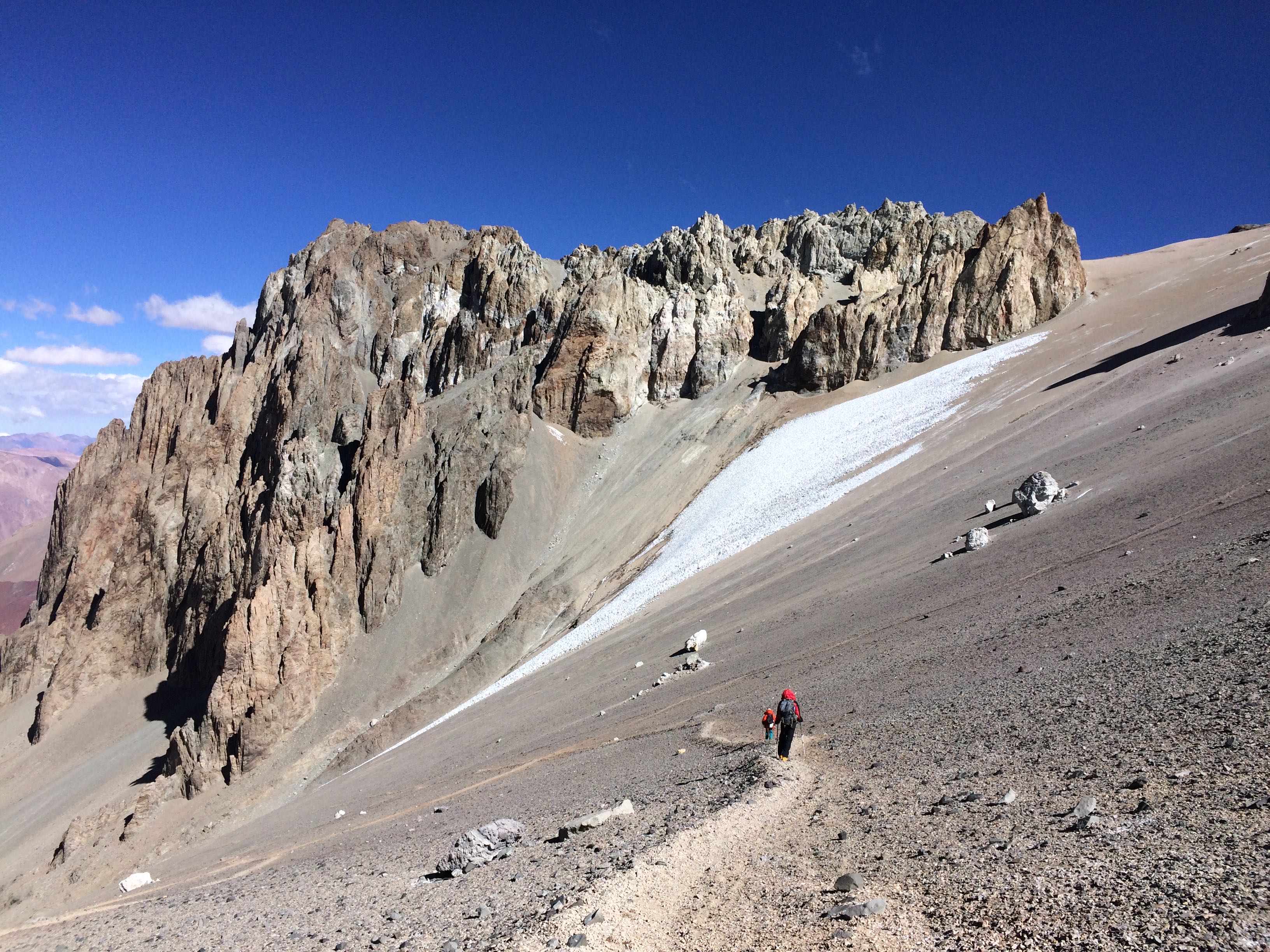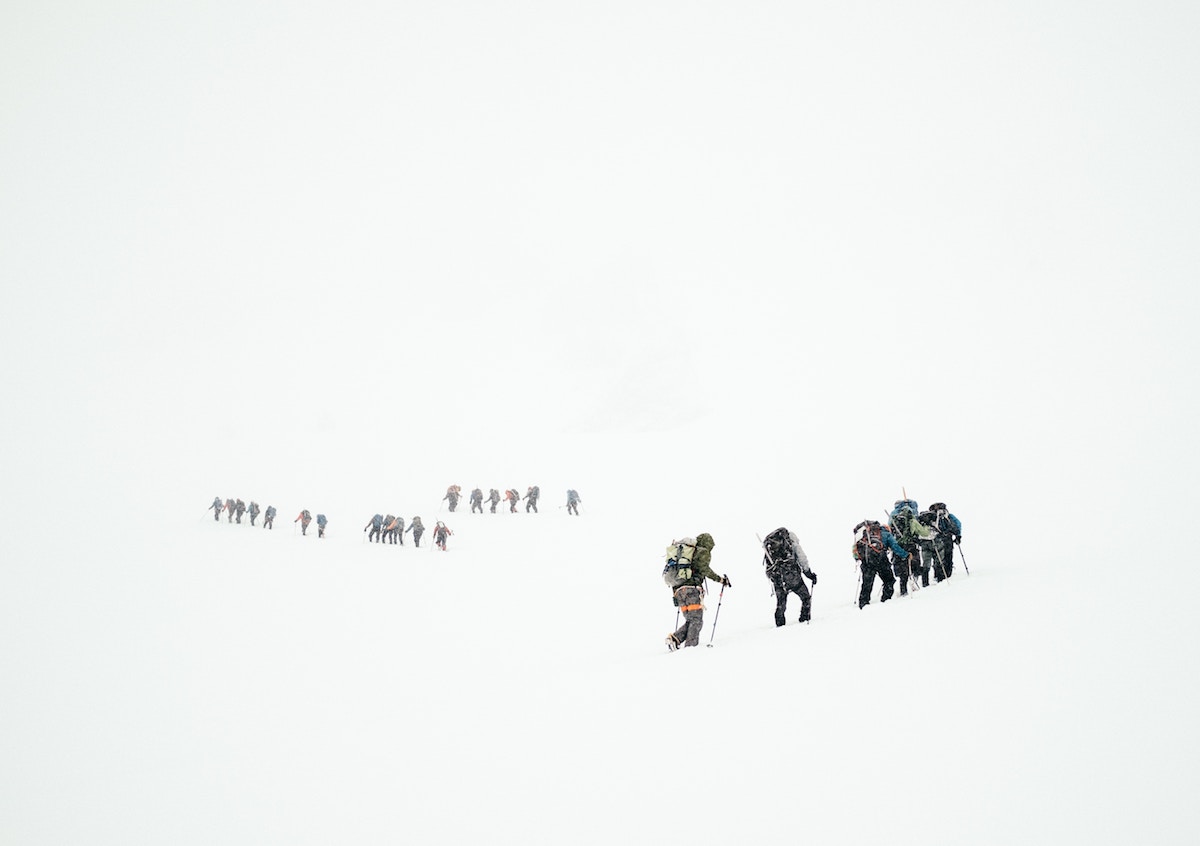How do I think about Aconcagua and risk management? Well, it is the highest mountain in the Western hemisphere. It is a frequently underestimated mountain – but climbing it does entail significant risks. So risk management is a relevant topic.
As mentioned in one of my other Aconcagua posts, I chose to turn back a few hundred feet from the summit of Aconcagua. The summit is 22,838 ft / 6960 m, which put me at something above 22,000 ft, at my estimate. In any event, this was a new altitude PR for me – my previous one was summiting on Kilimanjaro (19,341 ft / 5895 m).
I guess I feel like I “climbed Aconcagua”, but I clearly did not “summit.” Why turn back?
The simple answer is that I was vomiting all day due to altitude sickness and had eaten next to nothing for a couple of days. The full answer is more interesting.
Does the vomiting mean I couldn’t have summited? Actually, no. As an endurance athlete, I’m confident that I know my body and mind well enough to know that I could have pushed through it and summited that day. So why didn’t I? The other simple answer is, risk management.
On all of my adventure outings, I have several goals:
- Stay safe and return home in one piece
- Do something meaningful
- Have fun in the moment (yep, type 2 fun qualifies*)
- Complete the mission – in this case, that would have meant summiting
*For anyone not sure what “type 2 fun” is: It’s generally only really fun in the traditional sense of the word after you’ve stopped doing it. In fact, it can be downright miserable while you’re in the midst of it. But you sure feel great about having done it (assuming you survive).
ALL of these goals are important to me. If it’s on this list, it matters a whole lot to me. Nonetheless, I’ve made some attempt to order the goals by priority – although the order varies depending on the outing. For example, if I’m flying a search and rescue mission, completing the mission is a whole lot more important than having fun and arguably takes the place of doing something meaningful – it IS the meaningful thing to be done. The ordering I mentioned here applies more to “fun adventures” such as the Aconcagua trip.
This “fun adventure ordering” makes completing the mission extremely important – but less important than 3 other priorities.
Some explanation to each of the priorities, because they probably mean something different to me than they do to you:
Staying Safe
Staying safe applies to both myself and any teammates or crew members that I may have with me at the time. That means no jeopardizing myself or others in pursuit of mission-itis (whether summit fever or any other variety). I have to explicitly put this as my number one goal, to avoid having my overwhelming desire to “get results” wash out my other priorities. I do not want to go home with regrets based on having put myself or someone else at risk needlessly. In flying, AOPA has its Never Again series, where pilots share stories of things they wish they hadn’t done – but fortunately lived to talk about them, in the hopes that others will learn from them. Maintaining a #1 focus on safety is my way of proactively avoiding having to tell a Never Again story, whether about flying, mountains, or anything else.
Doing Something Meaningful
Doing something meaningful most frequently means gaining skills and stretching my currently perceived limits. If you read my blog regularly, you know how important that is to me. “Something meaningful” may also be something more specific about the particular activity. I already gave the example where completing the mission is the meaningful task; there are other examples – maybe in the course of my completing an adventure, I’m also doing something useful such as field testing sensors in an extreme environment, taking environmental samples for a scientific study, volunteering to build something that helps a remote community, etc.
Having Fun
What about the having fun part? Ah… the joys of type 2 fun. My statement of “fun in the moment” almost contradicts the definition of type 2 fun. Still, I stand by it. I don’t like suffering… really, I don’t! But I do practice mindfulness medication – and I do enjoy things in the moment, even when being cold or exhausted or miserable or … is part of what it takes to get there… provided, of course, that I am getting something meaningful out of it.
Did I enjoy setting up a tent (camp 1) in the middle of a blizzard with 80-90mph gusts of wind? Well… I felt great about our teamwork after the fact (definitely type 2!). I was freezing cold and tired (not fun). However, even in the midst of this effort, I was enjoying myself – because in the moment, I was with my team, and we were conquering adversity. It is that knowledge that makes it “fun” yes, even in the middle of being cold. It is possible to be (emotionally) happy and (physically) miserable at the same time, not only in hindsight! If that’s not something you can relate to, maybe count yourself lucky. (My tent mate, Kristin, took this selfie-video from within the tent.)
Completing the Mission
And now we come to completing the mission and what that means to me. On this trip, summiting was the primary mission. On some adventures, there may be secondary ones – complete the 100m run (1 – base level mission accomplished); complete the 100m run in under X hours (2 – better); complete the 100m run in under Y hours (3 – best); etc.
Clearly, I did not complete the mission by this definition. All other things being equal, would it have been better if I had? Yes, of course it would have! I’m not going to pretend it doesn’t matter. Sour grapes have no place here! The problem is, other things are never equal. Rather, other factors are always in play.
Back to Aconcagua and Risk Management
So what does this have to do with Aconcagua and risk management? On summit day, I threw up everything I attempted to eat – or drink. This came after a couple of days of not being able to eat much of anything (due to altitude). As a result, I was in a severe caloric deficit and very dehydrated. The former is OK. I’m a lousy eater in ultra-endurance events in general (even before you throw altitude and freeze dried food into the mix), and I’ve been training my body to keep going without food. Dehydration is more of a problem – despite myths among athletes, this isn’t something to train for. On the whole I was weak and dizzy and becoming more so.
Both would have been OK on the way up. Definitely type 2 fun… the kind of misery to push through to reach the goal and (subsequently) feel great. If I’d had a helicopter picking me up from the summit, continuing up would have been a no brainer.
The risk management problem I had was in planning ahead for the way down. Aconcagua is mighty steep near its summit. Accidents typically happen on the way back. Dizziness and a steep descent are not a healthy combination. In my judgment, my weakened state would have put us on the summit near the end of the time window generally considered safe, and then we’d have started a similarly slow descent which would have taken us until well after dark. Dark, slow, steep, descending, dizzy – any one of those or possibly two or maybe even three of those factors are acceptable to me. All of them together surpassed my threshold of what I wanted to be subjected to and subject my climbing companion to.
Could we have descended safely? Yeah, probably. With risk management, you never know what might have happened. All you can really say is that you took (or didn’t take) the safe way out.
I felt good about my decision-making under pressure on the mountain, and I still feel good about it now! More importantly, I lived to tell you about it – without even having to turn it into a Never Again story.
For other info related to my Aconcagua trip, please also visit my gear review post or simply contact me directly.






Leave A Comment